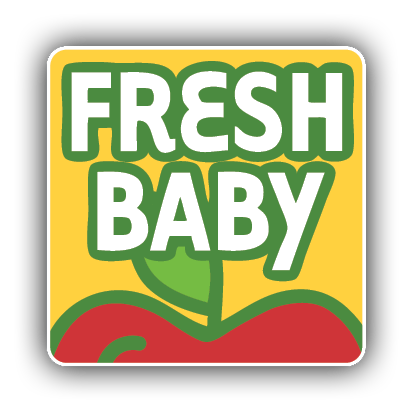
By weight, a baby will eat more, drink more, and even breathe more air than an adult. This means what you feed your baby (or child) has a much greater health impact than it would have on you.
Most people would love to go “all organic” with their food choices. Who really wants the pesticides, hormones and preservatives in their food? But going organic can be a pricey proposition. If your family is like most, your budget cannot afford 100 percent organic. So why not consider buying organic for some foods? Here is some simple advice on prioritizing your organic food purchases:
1. Eat organic at the top of the food chain: Purchasing organic dairy, egg and meat products is a great place to begin organic food purchases. Livestock eat pesticide-laden feed and are often dosed with antibiotics and hormones. All of this ends up in the package at the supermarket. Even though produce is often associated with organic food, many of the residues on fruits and vegetables can be eliminated or greatly reduced by properly cleaning and peeling them. There is no way to remove or reduce the contaminants in the meat, dairy and egg products.
2. Buy organic for produce with the highest levels of pesticides: Pesticides levels vary in produce. Foods that take a long time to grow have higher pesticides levels. Foods that are high in sugar content tend to attract bugs and insects, and as result, are sprayed more frequently.
The Environmental Workers Union analyzed a large number of foods and found you can reduce risks of pesticide exposure by as much as 90 percent by avoiding the Dirty Dozen Plus™, or the top 14 produce items with the highest pesticide residues. Here is the list:
- Apples
- Celery
- Sweet bell peppers
- Peaches
- Strawberries
- Nectarines (imported)
- Grapes
- Spinach
- Lettuce
- Cucumbers
- Blueberries (domestic)
- Potatoes
- Green beans
- Kale/Greens
On the flip side, these fruits and veggies have the lowest levels of pesticide residues:
- Onions
- Sweet corn
- Pineapples
- Avocado
- Cabbage
- Sweet peas
- Asparagus
- Mangoes
- Eggplant
- Kiwi
- Cantaloupe (domestic)
- Sweet potatoes
- Grapefruit
- Watermelon
- Mushrooms
3. Buy organic for children’s favorite foods: Babies and toddlers are notorious for having some strange eating habits. One of them is eating the same foods day in and day out. This is a perfectly normal development step for your child. Buy organic foods for what your little one is eating the most of at meals.
4. Be flexible. Buy what is on sale: Organic foods are like all other foods products, there are always specials on foods that are in season and there are always coupons. Keep your menu-planning flexible to take advantage of supermarket deals and remember the savings from one coupon can often equal the price difference between organic and conventional.
- Buy private label: If you think your family budget can’t afford the prices at the fancy natural products stores, think again. Wild Oats, Whole Foods and Trader Joe’s all offer a private-label brands of juices, soups, sauces and other processed edibles.
- Explore the bulk aisles: If you thought the bulk bins were only for hard-core hippies, think again. Many common kitchen staples like pastas, cereals, nuts, and spices are offered in the bulk section. The foods are in large containers and are priced at a per pound rate. Bulk foods are more affordable than the pre-packaged foods. If you are intimidated by the bulk food aisle, ask for help. The people who work in the bulk food section are extremely helpful and very willing to support new customers.


